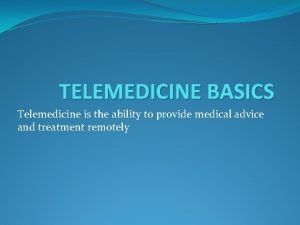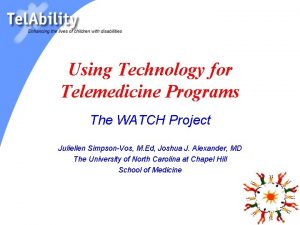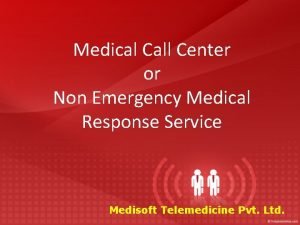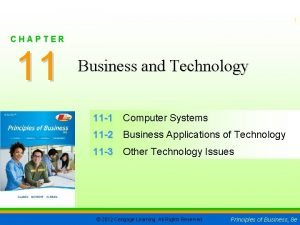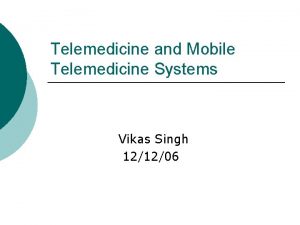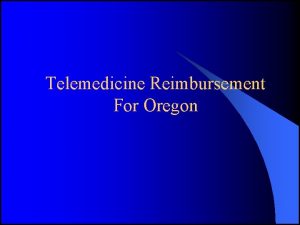Telemedicine Telemedicine Definition The use of computers the













- Slides: 13

Telemedicine

Telemedicine �Definition: “The use of computers, the Internet, and other communication technologies to provide medical care to patients at a distance. ” �Forms: Voice Data Still images Motion picture

Telemedicine �Includes: Diagnoses Patient monitoring Treatments

Telemedicine �Telehealth: Larger field that includes health- related education public health research health services administration

Telemedicine �Advantages: Brings high quality medical care to anyone regardless of distance Decreases patient wait time Decreases patient travel time

Telemedicine �Teleradiology: Oldest form of telemedicine using computers and telecommunications. �Interactive video conferencing: Conferencing that allows medical professionals and patients to consult in real-time, using telephones and video screens.

Telemedicine �Telepathology: Transmission of microscopic images over telecommunications lines allowing the pathologist to view images on a monitor instead of under a microscope. �Telepsychiatry: Uses teleconferencing to deliver psychotherapy. May not be suitable for some types of mental illness.

Telemedicine �Remote monitoring devices Telespironmetry▪ used for asthma patients ▪ information transmitted over telephone lines to remote location Arrhythmia monitoring ▪ ECG telemetry that monitors a patient’s cardiac status and sends it to a remote location

Effectiveness of Telemedicine �Examining a patient at a distance is not the same as examining that patient face to face �In prisons, telemedicine has led to decreased costs and improved health care for inmates

Effectiveness of Telemedicine �Medical assistants at the remote sites may be useful �Small hospitals and clinics may find hardware costs prohibitive �Research studies generally favorable for medical and cost effectiveness

Use of Telemedicine �Health care to the elderly (homebound) �Connect rural primary care physicians to urban specialists �Allow families of high-risk newborns to watch babies’ hospital care from home �Data can be transmitted from ambulance to ER �Patients with chronic illnesses can receive medication reminders at home

Issues in Telemedicine �Technical issues appropriate telecommunications infrastructure must be in place not available in some rural and urban areas requires high bandwidth (cable modem)

Issues in Telemedicine �Insurance issues insurance may not coverall telemedicine �Legal issues licensing laws differ in each state liability is not clear �Privacy issues electronic medical record subject to misuse HIPPA (Health Insurance Portability and Accountability Act of 1996)
 Telehealth and telemedicine
Telehealth and telemedicine Telemedicine basics
Telemedicine basics Telemedicine wikipedia
Telemedicine wikipedia Telemedicine software
Telemedicine software Bric telemedicine market
Bric telemedicine market Vsee telemedicine kit
Vsee telemedicine kit Medisoft telemedicine pvt ltd
Medisoft telemedicine pvt ltd Telemedicine wikipedia
Telemedicine wikipedia Hacking site drive.google.com
Hacking site drive.google.com Chapter 11 study guide business and technology
Chapter 11 study guide business and technology Hình ảnh bộ gõ cơ thể búng tay
Hình ảnh bộ gõ cơ thể búng tay Ng-html
Ng-html Bổ thể
Bổ thể Tỉ lệ cơ thể trẻ em
Tỉ lệ cơ thể trẻ em

